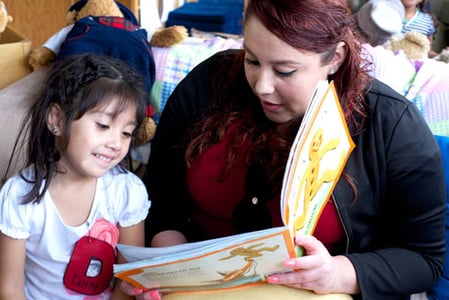

There is an emerging consensus that dual language learners are best served by dual language classrooms. This ensures that their home language is accepted, preserved, and deepened, which has notable academic and social/emotional benefits for children. Dual language classrooms can range from settings in which the teachers work with children and do some translation in their home language, to two-way immersion classrooms that spend half the day in English and half in a second language.
Unfortunately, lots of dual language learners don’t have access to these optimal kinds of settings, for many reasons—because their home language isn’t widely used where they live, or because their teachers don’t speak their home language well, for example. Researchers who work with dual language learners note that these children, like all children, benefit from environments with warm, stimulating, and well-organized teacher-child interactions. But how exactly can teacher-child interactions help dual language learners when support in their home language is low?
A study by Susan Sonnenschein and colleagues published in NHSA Dialog investigated just this among Spanish-speaking dual language learners whose teachers used very little Spanish. They looked specifically at Language Modeling, which captures the level and frequency of conversations, use of open-ended questions, and repetition and extension of utterances, among other aspects of language use. They wanted to know whether Language Modeling was associated with gains in children’s early literacy and math skills.
I wanted to highlight two main takeaways, although the full paper deserves a read. Language Modeling significantly predicted vocabulary gains among dual language learners. Vocabulary, in turn, predicted gains in phonological awareness and math skills. In other words, Language Modeling did not directly predict the two outcomes, but it had an indirect effect through gains in vocabulary:
The authors concluded, in part, that children need a basic level of English vocabulary in order to make gains in other domains that require language.
It’s great to see that Language Modeling, even mostly in English, can have a positive effect on the vocabulary skills of dual language learners, and that those effects transfer to other areas of learning. It doesn’t change the fact that these children are best served where their needs can be met in both languages, but given the challenges, this seems like a positive sign.
